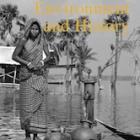Katko, Tapio S., P.S. Juuti, and J. Tempelhoff. “Water and the City.” Environment and History 16, no. 2 (May, 2010): 213–34. doi:10.3197/096734010X12699419057331. Republished by the Environment & Society Portal, Multimedia Library. http://www.environmentandsociety.org/node/7606.
The growth and development of urban spaces in all parts of the world is an outstanding feature of modern history. Apart from being notable growth generators of economies, cities have also been localities where the poorest of the poor congregate seeking the opportunity to make a living. Another outstanding feature of cities has been the growth and development of their comprehensive water infrastructure.
The theme included eleven sessions with 37 presented papers and one Round Table Panel with five presentations that were regrouped for synthesis under the following categories: water and urban landscape, ancient urban water, managing urban water systems (technological breakthroughs, integration and regionalisation, flood control, policy and politics, challenges in developing and transition economies, sanitary and environmental education) and water privatisation. By 2007 more than a half of the world’s population were living in urban areas; urban growth is fastest in the third world. Thus, the theme will only grow in importance in the future.
Several presentations showed that decisions on water resources and services are to a large extent public by nature. The paradigm shift under way towards more efficient water use is limiting the growth of water use. The use of traditional technologies should also be considered when striving towards sustainability. Finally, understanding their pasts is a basic requirement for any sound strategic and visionary planning of preferable futures for cities.
— Text from The White Horse Press website
All rights reserved. © 2010 The White Horse Press


